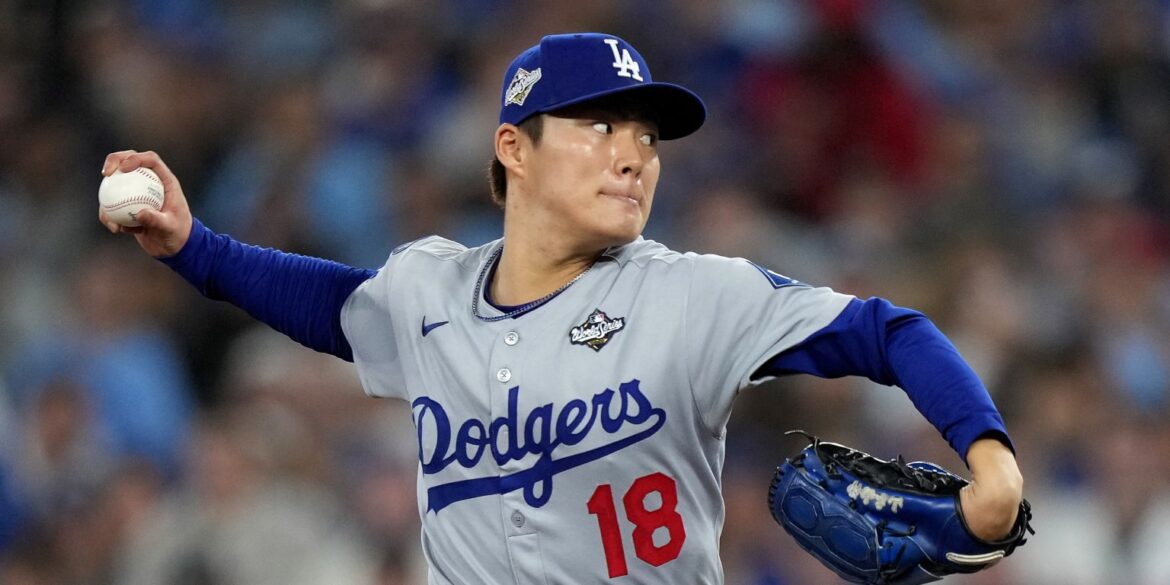When the Blue Jays went back-to-back for the franchise’s first and only two world championships from 1992-93, both were won in Game 6. By now, we’ve all seen the countless replays of the ‘93 title victory, which Joe Carter clinched by creating one of the greatest moments in sports with a walk-off home run against the Phillies.
“A very, very elite guy had a great game,” Blue Jays designated hitter George Springer said after Game 2. “When he’s on his game like that, he’s hard to score off of, as we’ve seen from him all year.”
The Dodgers have thrown four starters in this Series that would likely challenge for the No. 1 spot in the rotation of 29 other teams in baseball. The Blue Jays have found a way to break through against Blake Snell, Tyler Glasnow and even Shohei Ohtani, to a certain extent. Yamamoto, however, truly tamed this pesky offense, getting through nine innings on just 105 pitches.
For the Blue Jays to overcome this tall task, their offense needs to do what it does best: Exhaust the opposing pitcher with long at-bats and put the ball in play. There was some of that against Yamamoto in Game 2 with 11 groundouts and three flyouts, but the right-hander also struck out eight and was on cruise control for most of the night, retiring his final 20 batters.
6 might be the magic number
If the Blue Jays are going to get to Yamamoto, one key will be to find a way to limit the strikeouts. A quick look at the numbers shows Yamamoto has fared significantly better this year in games where he’s recorded six or more strikeouts as opposed to games with five or fewer.
Yamamoto in games with 6+ strikeouts (playoffs included)
37 games
227 1/3 innings
6.14 innings per start
1.94 ERA
0.86 WHIP
32.4% K rate
6.5% BB rate
0.55 HR/9
Yamamoto in games with five or fewer strikeouts (playoffs included)
19 games
83 2/3 innings
4.40 innings per start
4.52 ERA
1.37 WHIP
17.5% K rate
9.4% BB rate
1.29 HR/9
When Yamamoto generates a high strikeout total, that’s typically when he’s at his best.
Laying off the secondary stuff
If you look at Yamamoto’s one “bad” start this postseason against the Phillies, when he allowed three runs on six hits and a walk over four innings, you’ll see that Philadelphia remained steadfast in its approach to not chase his curveball and splitter, the two wipeout pitches in his arsenal. This resulted in only two strikeouts and far fewer swings and misses.
Yamamoto’s curve + splitter vs. Phillies:
7% chase rate (1 swing / 14 out-of-zone curves+splitters)
0% whiff rate (0 misses / 8 swings vs. curves+splitters)
Yamamoto’s curve + splitter across all other 2025 PS starts (Game 2 included):
41% chase rate (38 swings / 92 out-of-zone curves+splitters)
36% whiff rate (30 misses / 84 swings vs. curves+splitters)
Yamamoto’s curve + splitter in World Series Game 2:
48% chase rate (14 swings / 29 out-of-zone curves+splitters)
36% whiff rate (11 misses / 31 swings vs. curves+splitters)
If the Blue Jays can lay off the curveball and splitter, they will have a much better shot than they did in Game 2. Of course, that’s easier said than done, as Yamamoto is riding his own momentum and usually has supreme command of both those pitches in the zone when needed.
“Man, hopefully he’s a little tired after throwing that many innings,” said manager John Schneider. “He’s unique because he’s got what seems like six or seven pitches and can kind of morph into different pitchers as the game goes on. You’ve got to be stubborn. You have to be ready to hit, and you have to be stubborn with what kind of swings you’re taking. That’s what it comes down to.”
David Adler and Brent Maguire contributed to the reporting for this story.
